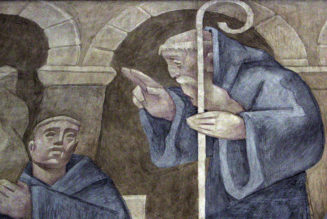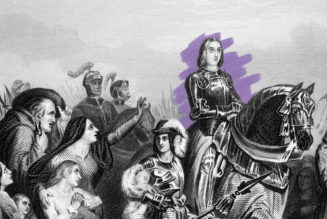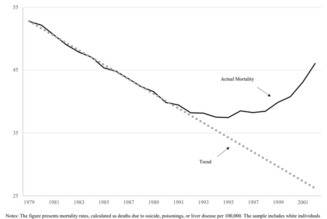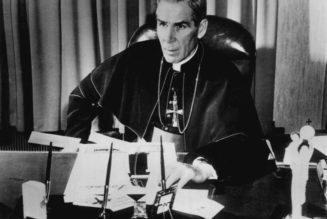In 2004, Marc Saperstein, a professor of Jewish Studies at George Washington University, offered a thoughtful review of The Popes Against the Jews: The Vatican’s Role in the Rise of Modern Anti-Semitism, written by David Kertzer, a professor at Brown University. Saperstein praised Kertzer’s recounting of oppression endured by Jews in papal territories during the first two-thirds of the 19th century, but went on to powerfully challenge Kertzer’s claims about the Vatican’s role in constructing the “Antechamber to the Holocaust.”
By coincidence, both professors Saperstein and Kertzer had rabbi fathers who served as U.S. Army chaplains in Europe during the Second World War. By further coincidence, testimony from Rabbi Harold Saperstein provides a good starting point for consideration of David Kertzer’s latest work, The Pope at War: The Secret History of Pius XII, Mussolini, and Hitler.
Standing before his Long Island congregation in 1964, Rabbi Harold Saperstein addressed the controversy surrounding “The Deputy,” which had introduced Broadway theater goers to a wartime pontiff more concerned with church assets than Jewish lives. Saperstein criticized Pope Pius XII for war crime denunciations deprived of “bite” by “diplomatic and theological verbiage.” Still, Saperstein insisted “from personal experience” as a U.S. Army chaplain that Pius XII himself be credited with church rescue of Roman Jews during the Nazis October 1943 round-up, recounting:
I drove into the Ghetto of Rome. People seeing the Star of David on my Jeep crowded around me. ‘How did you survive,’ I asked? ‘The Pope gave orders to the churches and the monasteries to take us in,’ they said, ‘and they did and saved our lives.’
This account by Saperstein—a learned but worldly man who had been wounded by an Arab sniper in Palestine in 1939 and worked with the Student Nonviolent Coordinating Committee in Alabama in 1965—was consistent with the reporting from liberated Rome by New York Times Pulitzer-winning columnist Anne O’Hare McCormick.
Once you consider the Jews who had entrusted their lives to the church amid Nazi terror, you land in the world of hard choices, where we might learn from history and test our moral imagination and judgment.
Now imagine you are Pius XII in October 1943, just after Germany’s SS had first moved against the Jews in Rome. Hundreds of Jews have already found shelter in Rome’s Catholic institutions, including the Vatican itself. (Within eight months, the number would swell well beyond 4,000, a third of Rome’s Jews.) You are weighing whether to chance the provocation of publicly denouncing the arrests of the 1,000 Jews captured and destined to die. Wouldn’t the risk to the Jews whom you had welcomed into the church’s safekeeping weigh heavily into your decision? Not by David I. Kertzer’s reckoning in The Pope at War: The Secret History of Pius XII, Mussolini, and Hitler.
Kertzer dwells reproachfully on the Vatican’s muted reaction to the roundup but does not acknowledge the on-the-ground dilemma presented by the Jews already hidden. Only after alighting on a random range of topics unrelated to Jewish persecution—like the rosary-clutching of Mussolini’s mistress—does Kertzer concede a chapter later merely that Pius was “aware that among the large number of refugees concealed in Rome’s religious buildings were many Jews.” He also falsely asserts that no evidence shows the pope having directed institutions to take in Jews.
Once you consider the Jews who had entrusted their lives to the church amidst Nazi terror, you land in the world of hard choices, where we might learn from history and test our moral imagination and judgment. Kertzer, however, opts for a prosecutorial perch. Unfortunately, overzealousness and tunnel vision warp his prosecution, such that his verdict, which relies partially on selective, sensationalized use of newly opened Vatican archives, is preordained.
In his telling, Pius XII, hobbled by a “nervous character,” failed as a moral leader. He lacked early confidence in an Allied victory and then became too concerned about Soviet influence. He was effectively indifferent toward the Jews, distrustful of democracy and overly concerned with maintaining favor among German Catholics.
Consider a sampling of Kertzer’s tunnel vision:
Pius XII’s first encyclical
If you subscribe to The New York Times, you are able to view online their Oct. 28, 1939 edition. The front-page, above-the-fold, three-column Times headline reads “Pope Condemns Dictators, Treaty Violators, Racism; Urges Restoring Of Poland.” The reference is to “Summi Pontificatus,” the first encyclical of Pius XII, issued within two months of the war’s outbreak. The French dropped copies of the text onto German troops, and as noted in the Palestine Post, the Gestapo prevented the encyclical’s disclosure by Catholic churches in Cologne.
One would think such an inaugural manifesto would provide the backdrop against which all subsequent Vatican messaging would be interpreted by the war-torn world. But in a book exceeding 600 pages, Kertzer manages to blow past “Summi Pontificatus” in less than two pages, obscuring the encyclical’s import and focusing on the spin and false self-reassurance among, Nazis and fascists. An uninformed reader would have no clue why the American Jewish Year Book 1940-41 concurred with the Times that Pius had “inveighed strongly against the doctrines of totalitarianism, racism and materialism,” a judgment that was shared by the French Ambassador to the Holy See, François Charles-Roux.
Overzealousness and tunnel vision warp Kertzer’s prosecution, such that his verdict, which relies partially on selective, sensationalized use of newly opened Vatican archives, is preordained.
Vatican Radio
Another example of Kertzer’s tunnel vision is his treatment of Vatican Radio. He writes that, in late 1940, “Many Poles wondered why Vatican Radio, while occasionally speaking of Soviet misdeeds in Poland, had remained silent about the German occupation of the country…” This misleads the reader egregiously.
In January 1940, Vatican Radio targeted Germany explicitly. Ranking Nazi behavior in Poland as worse than that of the Russians, a report broadcast in various languages decried how “Jews and Poles are being herded into separate ‘ghettos,’ hermetically sealed and pitifully inadequate for the economic subsistence of the millions destined to live there.” A 1941 book prefaced by Cardinal Arthur Hinsley, the archbishop of Westminster who had appeared with his Anglican counterpart at Royal Albert Hall to decry Kristallnacht years earlier, contained a transcript of the broadcast. With less delay, the broadcast made The New York Timesfront page on Jan. 23, 1940. Part of the headline reads: “Germans Called Even Worse Than Russians.”
Kertzer makes no mention of this or other Vatican Radio broadcasts. The book does not reference Vatican Radio’s October 1940 broadcasts pronouncing that “Hitler’s war, unfortunately, is not a just war” or denouncing the Nazis’ “immoral principles,” nor the March 1941 reference to “the wickedness of Hitler.” Nor will the reader learn about the August 1941 lament over “[t]his scandal… the treatment of the Jews” or the repeated 1942 broadcasts of, and commentaries on the letter of the Archbishop of Toulouse, Cardinal Jules-Géraud Saliège, protesting the deportation of Jews in France.
More troubling is the omission of a speech broadcast by Vatican Radio and reprinted in L’Osservatore Romano (another Vatican organ Kertzer deprives of its due). Kertzer recounts Pius XII’s address to the College of Cardinals in June 1943: “the pope expressed his desire to respond to those who had asked for words of comfort, ‘troubled as they are,’ as the pope put it, ‘by reason of their nationality and their descent.’”
In Under His Very Windows,even Susan Zuccotti, a decided Pius XII critic whom Kertzer cites repeatedly, quotes the pope fully. The pontiff voices compassion for those “tormented as they are for reasons of their nationality or descent” and “destined sometimes, even without guilt on their part, to exterminatory measures.” Whether the Italian “travagliati” best translates here into “torment” or “trouble” lends itself to debate, but Kertzer’s omission of the extermination reference is a terrible tell, a warning of facts fashioned to fit a conclusion, not vice versa.
Vatican diplomatic interventions
Kertzer’s treatment of the Vatican’s diplomatic intervention in Slovakia is equally misleading. Archbishop Angelo Roncalli, the Vatican nuncio to Turkey (and later Pope John XXIII), sought to win Vatican support for transport to Palestine for Jewish children threatened with Nazi deportation from Slovakia. Initially, a blatantly antisemitic staffer reviewed the request and objected based on Zionism’s threat to Catholic claims on the Holy Land. That objection registered as the matter underwent consideration higher up; Pius XII sent a telegram at one point to Roncalli that ignored the Palestine idea and instead instructed him to seek only a stop to deportations. By Kertzer’s telling, Roncalli ultimately received instruction to “not give too much support to the emigration of the Jews to Palestine.”
Kertzer rightly brings this episode to the fore. Geographical stakes should never take precedence over innocent human lives. Kertzer, however, again culls the evidence. Specifically, to suggest that public relations drove papal policy regarding Slovakia’s Jews, he notes a Vatican memorandum that states concern about the possible appearance of scandal in Slovakia because a Catholic priest (as Kertzer made sure to note earlier on) headed Slovakia’s government. Kertzer fails to note in what he has described as his archival “treasure hunting” that the Vatican regarded the priest as a “mad” renegade. Kertzer also skips over the opening sentence of a Vatican memorandum on Slovakia one week earlier: “The Jewish question is a question of humanity. The persecutions to which the Jews in Germany and the occupied or conquered countries are subjected are an offense against justice, charity, and humanity.”
More broadly, Kertzer fails to convey the vast sweep of Vatican diplomatic interventions, sometimes successful but too often not, on behalf of Jews, not only those who had converted to Christianity but also non-baptized Jews. One finishes The Pope at War with no knowledge of papal diplomatic salvage efforts in places such as Hungary, Bulgaria, Croatia, France and Germany itself. Evidence of Rome’s diplomatic entreaties—some of which were contemporaneously reported at least in the New York Times—were already there for the reading in previously accessible Vatican archives.
Kertzer fails to convey the vast sweep of Vatican diplomatic interventions, sometimes successful but too often not, on behalf of Jews.
The German prince
Kertzer boasts an important find in archival evidence of Pius’s clandestine wartime attempts to negotiate for better wartime treatment of the battered Church in Germany through a German prince. In fact the diaries of Italian Foreign Minister Galeazzo Ciano published in 1946, along with German archives published in English in the 1950s and Vatican archives released in 1965, all reference the prince intermediary.
If Kertzer’s point is to show the Vatican capacity for intrigue, Pius’ lengthy collaboration with the German resistance, amply documented in Mark Riebling’s Church of Spies, would have done the trick. McGill University’s Peter Hoffman reports that when German authorities arrested resistance figures (including Dietrich Bonhoeffer) in April 1943, leading conspirator Ludwig Beck made notifying Pius XII his first order.
Kertzer mentions none of this. He does not explain how papal support for the resistance, conducted through use of diplomatic channels, could have continued had the Vatican decided to drop its pretense of neutrality. Nor does he address the purely logistical obstacles to Pius XII setting Catholic consciences afire with a flaming, explicit denunciation of Hitler. Kertzer clearly thinks Pius XII should have attempted such a protest, with no concern for the assured recrimination that move would have brought against the church and anyone it aided by diplomatic intervention or safe haven.
As noted earlier, Kertzer’s father (to whom The Pope at War is dedicated) served as a chaplain in Europe. Morris Kertzer earned a Bronze Star and also experienced a newly liberated Rome, which he wrote about then and a few years later. A Midwestern newspaper in June 1944 quoted a letter from Kertzer: “The role of the pope and the many monasteries who hid the Jews from the [N]azis, and surreptitiously fed them, when detection could well mean seizure of the Vatican by the [N]azis, is to my mind a bright addition to the story of Christianity.”
That letter, I suppose, provides a bit more support for those (unlike myself) who wish to see Pius canonized. Still, Rabbi Kertzer’s writing offers a more valuable, universal insight. In his 1947 book, With an H on My Dog Tag, Rabbi Kertzer focused on Rome’s Chief Rabbi Israel Zolli, who created controversy by becoming Catholic. Zolli’s conversion brought charges from other Jews in the postwar era that Zolli had wrongly “refused to accept martyrdom when the Germans entered Rome.” Rabbi Kertzer took a clear-eyed but compassionate view of Zolli, and issued this caution: “A critic in a comfortable apartment in New York or Chicago who condemns a man for refusing to be martyred should canvass his own conscience.”
In that vein, we should beware the temptation of moral condescension engendered by storytelling in which the ethical dilemmas faced by historical actors are minimized or stripped out altogether.
Join Our Telegram Group : Salvation & Prosperity












